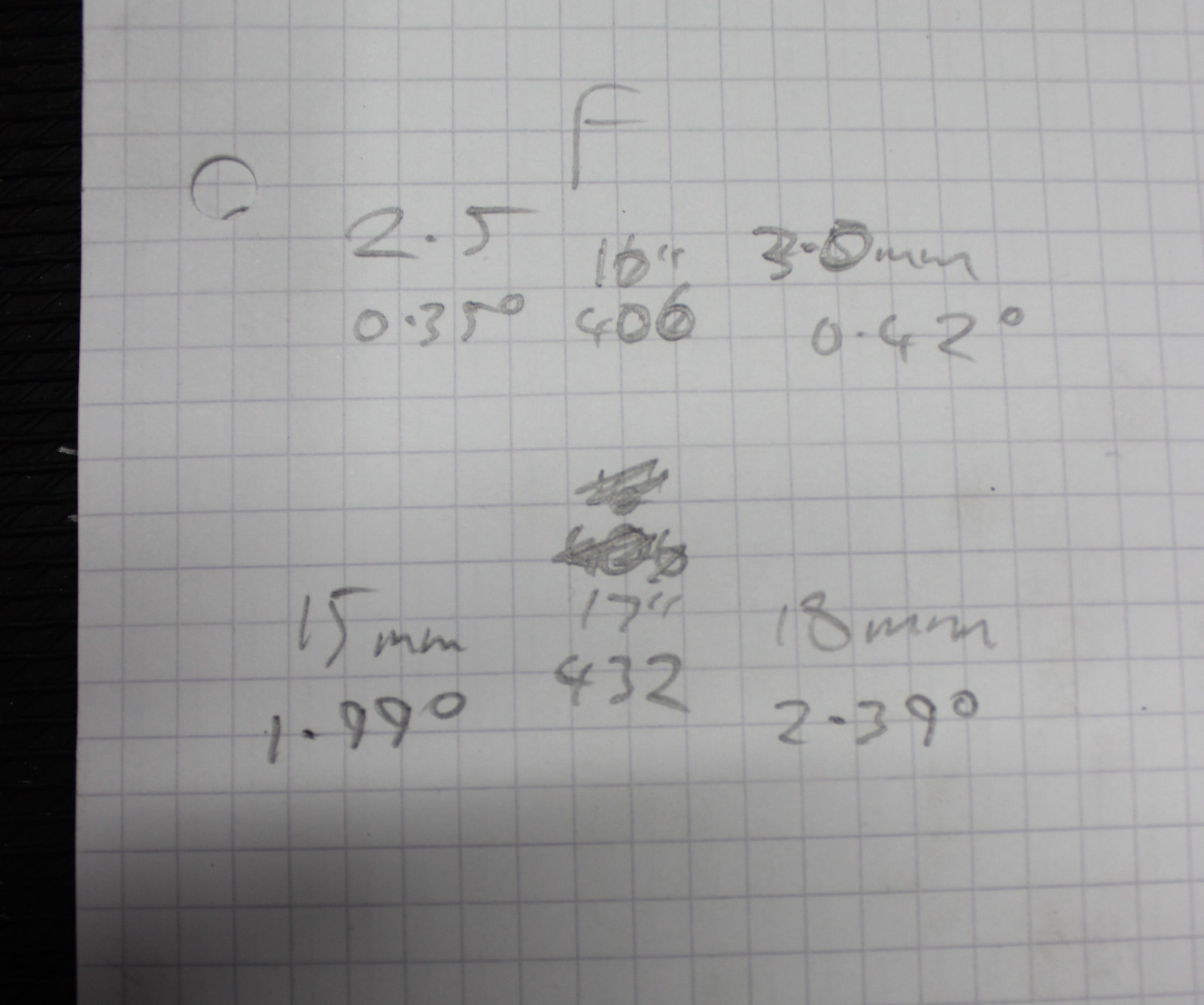Having replaced the rods and rod ends of the rear toe links and the track rod ends on the steering it was certainly worth a quick check of the wheel alignment. Plus I don’t know exactly when it was last done or how it was set so I wanted to find out how things were as a start point.
By this point I knew I would probably end up doing a full suspension refresh before too long so I just wanted to check things were ok and nothing was too far off. I would come back to setting things to however I want them for my use at a later date.
Before checking the alignment I spent a few minutes cleaning up the back surfaces of the wheels and setting all the tyre pressures correctly.
Wheels back on the car.
Car back on the ground, wheel nuts torqued up and out with my homebrew alignment kit.
I’ve been doing my own wheel alignments, in various ways, ever since owning my first car and this is the current evolution. 4 axle stands, 4 home made supports to fit the stands, 2 long sections of box with matched distance markings on them and some fishing line. Oh and a metal rule and plumb line.
Making sure things are level. I already know the floor is level and the blocks the tyres are on are all the same thickness.
Spot on.
The fishing line needs to be set at the right height to pass through the wheel centre. So after some measurements I drilled a couple of holes in the supports so I could use a bolt to keep the height set correct and equal on each side.
Like so.
Same thing at the rear.
Now there’s just a lot of running around the car measuring the distance from the wheel centre to the fishing line and slightly adjusting the position of the line until it’s square and even all round. The matched marks on the horizontal bars ensure the width front and rear is the same and matching the distance from the wheel centres side to side ensures it’s square.
Now I can measure the distance from the front and rear edges of any wheel rim to the fishing line. The difference gives me the toe in/out there is then I can adjust it as required.
I measure the camber in the same kind of way except I use a plumb line set next to the wheel and measure the difference in distance between the top and bottom edges.
After a fair bit of adjust, check, adjust, check, reset, check, adjust… I got the front and rear toe set. There was a bit more camber on the rear than I’d like and maybe not quite as much as I’d like on the front but I didn’t want to get into adjusting camber just yet as I knew I’d only be pulling it all apart again before too long. I scribbled down the camber I measured so I know where I’m starting from for later.
I haven’t gone into too much detail about exactly how I do this but maybe once I’ve done a suspension refresh and have to do a full setup from scratch I might put together a full description of exactly how I do things, not that I’m doing anything special compared to how many other people out there do their own wheel alignment. This is a pretty tried and tested method and I’m certainly very happy it works well. I’m always checking tyre wear on my cars and they always wear very evenly on all cars I’ve setup myself. If things were not set right my cars would chew through tyres pretty quickly.


















